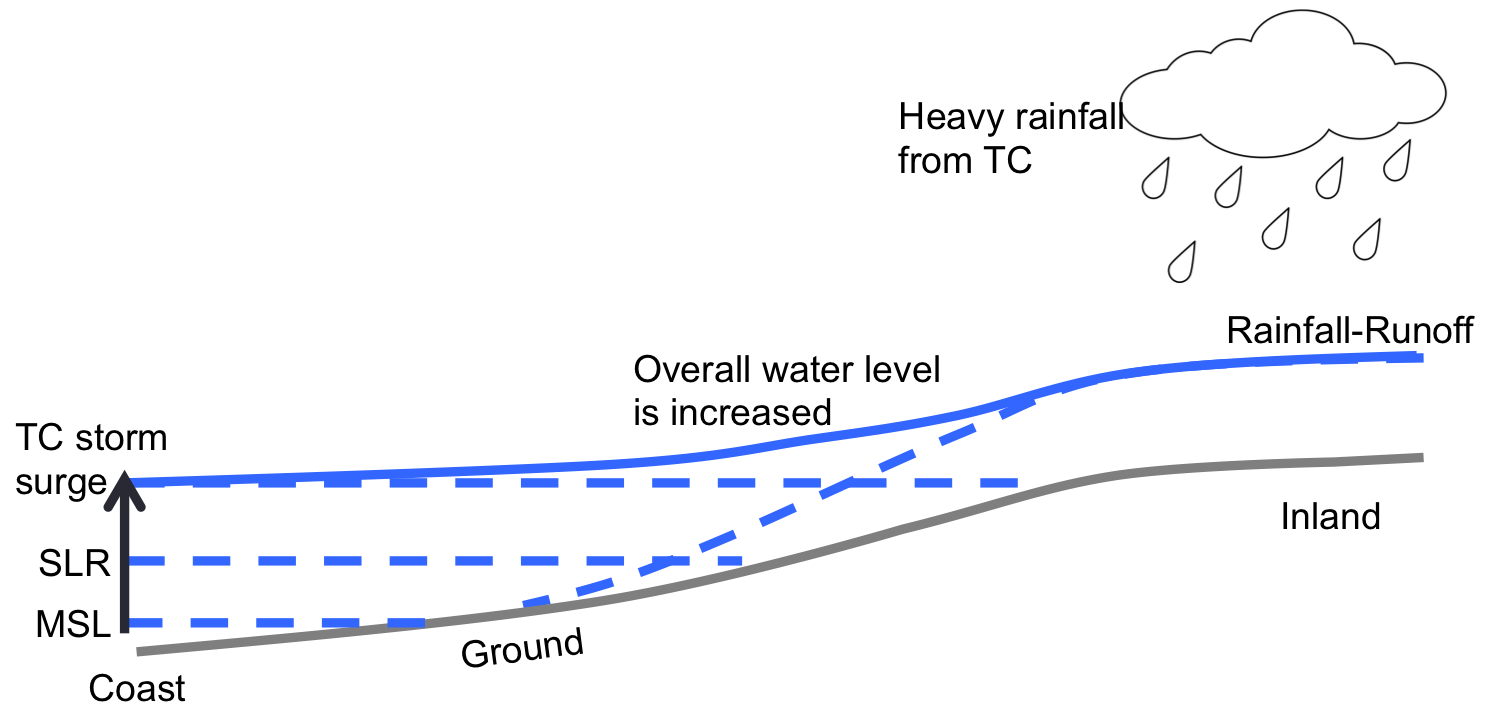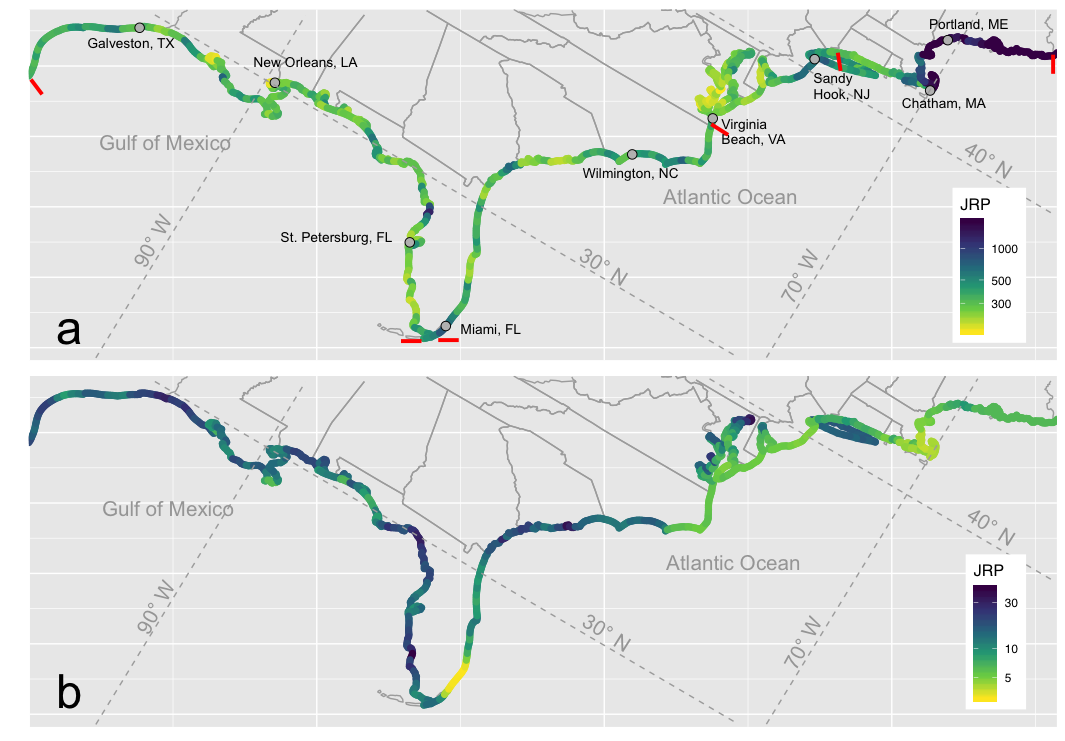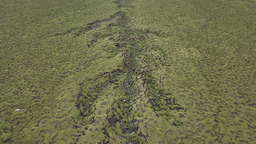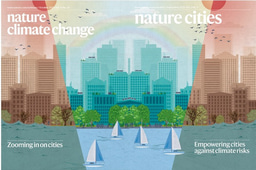Understanding the joint risk from hurricane rainfall and storm surges: now and under future climate warming
Published in Sustainability
Coastal communities in the US are highly vulnerable to floods, which can be caused by storm surges, extreme rainfall, and upstream river discharges. If multiple flood mechanisms occur simultaneously or sequentially, their impacts can compound so that the total flooding is worsened (Figure 1). Traditionally, it was assumed that rainfall and storm surges occurred independently, and thus their potential compounding was not taken into account in flood risk assessment. In reality, storm surges and rainfall may be highly dependent, since a single storm system can often generate both flood mechanisms. For example, tropical cyclones (TCs) are one of the largest drivers of coastal flood losses, and a single TC can generate both extreme storm surges and extreme rainfall. Moreover, as the climate continues to warm, causing rising sea levels and potential changes in TC storm climatology, the risk of joint rainfall-surge events may increase significantly.

Figure 1: Compound flooding occurs when rainfall and storm surges caused by a landfalling tropical cyclone interact to increase the overall flood impact. Sea level rise can worsen compound flooding by further increasing coastal water levels.
Characterizing the probability of joint TC rainfall-surge occurrence is challenging due to limited observations in the historical record and the relatively coarse spatial resolution of typical GCMs, which limits their ability to resolve high intensity TCs. To overcome these limitations, we utilize a statistical-deterministic downscaling approach to generate ~1500 years of synthetic TCs consistent with the large-scale environment from 1980-2005. We also generate ~800 years of synthetic TCs under the SSP5 8.5 high emission scenario for the period between 2070-2100. We then model the rainfall fields and storm surges from each TC using high-resolution, computationally efficient physics-based models, and combine our modeled hazards with probabilistic sea-level rise (SLR) projections. We define a joint extreme event as one that exceeds the 100-year level (magnitude that has <1% chance of occurring in any year) of both 24-hour rainfall and peak storm tide. We quantify the probability of joint extreme event occurrence (represented as the return period of a joint extreme event) under the historical climate and future climate projection based on the modeled rainfall and storm tides, and a multivariate statistical model.
Based on our modeling analysis, we found a drastic increase by 2100 in the frequency of joint extreme rainfall-surge events due to a combination of future SLR and changes in TC climatology (Figure 2). For example, along the Gulf of Mexico joint extreme events occur on average once every 200-500 years in the historical climate, but may occur as often as every 10-30 years in the future. For regions in the Northeast US, the increase in joint event frequency is even larger such that in the future the Mid-Atlantic and New England regions may experience joint extreme events on average once per 5-10 years.

Figure 2: The joint return period (i.e. frequency in years) of 100-year rainfall and 100-year storm tide, defined in the historical period. (a) Joint return period (JRP) in the historical period (1980-2005) and (b) JRP in the future period (2070-2100)
What mechanisms are driving such large increases in joint hazard? Along the Mid-Atlantic and New England coastlines we find that future SLR is a large contributor to increases in joint event frequency, while the role of SLR is smaller for the Southern US coastline. In contrast, we find that projected changes in TC climatology are a dominant driver of increases in joint event frequency for almost the entire (96%) coastline from the Gulf of Mexico to New England. Of the projected climatology changes, we find that increases in TC intensity (i.e. maximum sustained wind speed) and decreases in TC translation speed may greatly increase coastal rainfall accumulations, thereby directly increasing the frequency of extreme rainfall-surge events. Increases in intensity and decreases in translation speed may also increase the correlation between extreme rainfall and extreme storm surges such that future TCs will have a higher probability of being multi-hazard rather than single-hazard events.
Our results have several broader implications for the quantification and management of coastal risk under evolving climate conditions. Specifically, we show that the risk of joint extreme rainfall-surge events is currently non-negligible and may grow significantly in the future. Thus, coastal risk assessments must jointly consider the impacts from rainfall, storm surges, and SLR. Next, we provide evidence that changes in TC climatology may be of similar importance as SLR in driving increases in coastal flood hazard in the future, and coastal risk assessments should not neglect potential changes in TC climatology. Here we project large increases in rainfall hazard in the future, especially for regions in the Northeast and New England. The recent flooding from Hurricane Ida (2021) that occurred in the greater New York City metropolitan region demonstrates that northern coastal cities may be unprepared to deal with future increases in extreme rainfall. Consequently, our findings also motivate greater consideration of and adaptation to extreme rainfall hazard in northern coastal communities.
The results presented here rely on the SSP5 8.5 climate scenario, which assumes the largest continuing CO2 emissions. Our results should not be viewed as a “most likely” scenario for the end of the 21st century, but rather as a credible upper bound of potential coastal hazard. Even still, exploring potential extreme outcomes as we do here provides valuable information to decision-makers seeking to understand evolving coastal risk and develop robust adaptation measures.
Follow the Topic
-
Nature Climate Change

A monthly journal dedicated to publishing the most significant and cutting-edge research on the nature, underlying causes or impacts of global climate change and its implications for the economy, policy and the world at large.



Please sign in or register for FREE
If you are a registered user on Research Communities by Springer Nature, please sign in